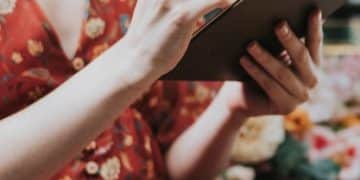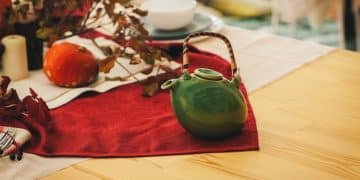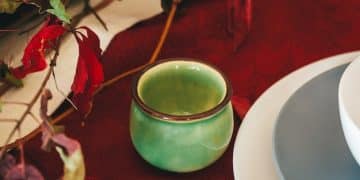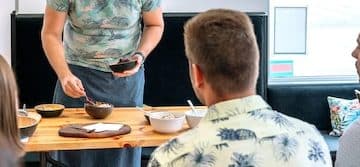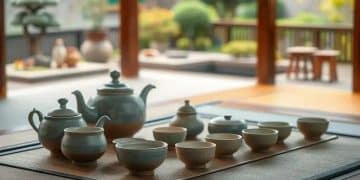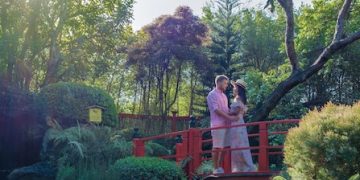Korean Tea Ceremony Etiquette: A Beginner’s Guide for US Participants
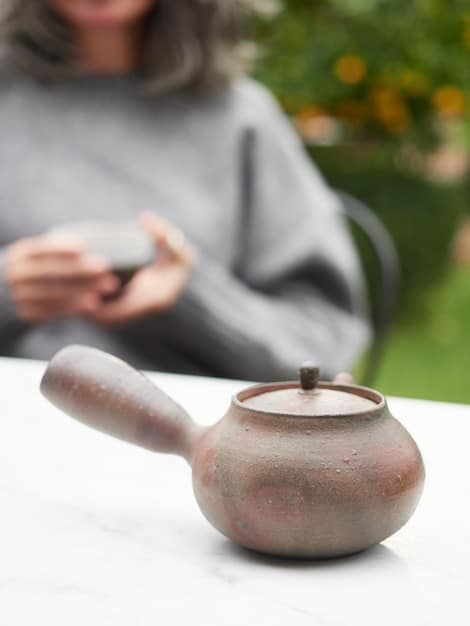
Korean Tea Ceremony Etiquette: A Beginner’s Guide for US Participants offers US individuals insights into the serene world of Korean tea ceremonies, covering essential rules, customs, and etiquette tips for a harmonious cultural experience.
Embarking on a Korean tea ceremony can be a culturally enriching experience. This Korean Tea Ceremony Etiquette: A Beginner’s Guide for US Participants, provides the essential knowledge to navigate this elegant tradition with grace and respect.
Understanding the Korean Tea Ceremony: An Introduction
The Korean tea ceremony, known as “darye” (다례), is a deeply rooted tradition that goes beyond simply drinking tea. It’s a ritual steeped in history, philosophy, and artistic expression. Understanding its significance is the first step in appreciating and participating respectfully.
For US participants, entering this cultural space requires sensitivity and a willingness to learn. This guide will offer a glimpse into the world of darye and provide essential etiquette tips.
The History and Significance of Darye
Darye’s history stretches back centuries, evolving from Buddhist rituals to aristocratic customs. Tea was originally valued for its medicinal properties and spiritual benefits.
Over time, the ceremony became a way to honor ancestors, express respect for elders, and cultivate inner peace. It embodies Confucian values of harmony, etiquette, and mindfulness.
Different Types of Tea Ceremonies
There are several types of Korean tea ceremonies, ranging from formal to more casual gatherings. The specific type of ceremony dictates the level of formality and the rituals involved.
Royal tea ceremonies were grand affairs, while scholar tea ceremonies emphasized simplicity and contemplation. Today, you might encounter family ceremonies or demonstrations showcasing the art of darye.
- Royal Tea Ceremony: Held for special occasions, involving elaborate costumes and settings.
- Scholar Tea Ceremony: Focused on simplicity, tranquility and appreciation for nature.
- Family Tea Ceremony: Often conducted during ancestral rites, honoring forebears with tea offerings.
- Demonstration Tea Ceremony: Shows the art to the audiences with the purpose to educate and celebrate tea culture.
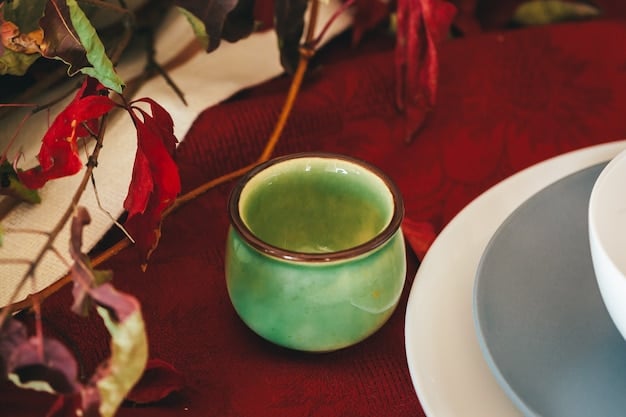
Ultimately, the Korean tea ceremony offers a unique opportunity to connect with Korean culture and experience a moment of tranquility and mindfulness. By understanding the history and significance of darye, US participants can approach the ceremony with a deeper appreciation and respect.
Key Etiquette Points to Remember
When participating in a Korean tea ceremony, remembering a few key etiquette points can help ensure a respectful and enjoyable experience. From proper seating to handling tea utensils, these guidelines will assist you in navigating the customs with grace.
For US participants, being mindful of these traditions demonstrates cultural sensitivity and a genuine interest in learning about darye.
Entering the Tea Room
Upon entering the tea room, it’s customary to bow slightly to show respect. Avoid loud greetings or disruptive behavior.
Wait to be seated by the host or tea master. Typically, guests are seated according to age or status, with elders receiving the most honored positions.
Seating and Posture
Maintain a good posture and avoid fidgeting. Sit upright and comfortably, either on the floor or on a cushion provided.
Refrain from crossing your legs, as this can be considered impolite. Keep your hands visible and avoid placing them in your lap or behind your back.
- Bowing: Offer a small bow upon entering as a sign of reverence.
- Posture: Sit straight and poised, preventing any restlessness.
- Hand Placement: Keep your hands observable, avoiding to keep them hidden.
By adhering to these etiquette points, US participants can exhibit respect and attentiveness throughout the Korean tea ceremony, creating a positive and meaningful encounter for all involved.
Understanding the Tea Utensils
The tea utensils used in a Korean tea ceremony are not merely tools but integral components of the ritual. Each piece has its own specific purpose and symbolism, contributing to the overall aesthetic and spiritual experience.
Familiarizing yourself with these utensils will not only enhance your understanding of the ceremony but also demonstrate your respect for the tradition. For US participants, appreciating the artistry and functionality of these tools deepens the experience of darye.
The Teapot (Juban)
The teapot, or “juban,” is traditionally made of Korean clay. Its design often reflects the natural world, with subtle curves and earthy tones.
The teapot is used to brew the tea and is typically heated before the ceremony to ensure the water is at the optimal temperature.
The Teacups (Da Wan)
The teacups, or “da wan,” are small, handleless bowls made of ceramic. Each cup is unique, adding to the personalized nature of the ceremony.
As a guest, you can admire and appreciate the craftsmanship of the teacups before taking a sip of tea.
- Juban: Korean clay teapot to brew the tea.
- Da Wan: Handleless ceramic bowls to serve the tea.
- Tea Bowl: A bowl in which the tea is prepared for serving.
Appreciating the history of Korean tea vessels adds depth to US participants’ respect and engagement in each aspect of darye. Recognizing the distinct qualities of each tool improves consideration and respect during the tea ceremony.
How to Receive and Drink Tea
The act of receiving and drinking tea in a Korean tea ceremony is a carefully choreographed sequence that requires mindfulness and respect. Proper etiquette ensures a harmonious experience for all participants.
For US participants, understanding these steps will help you engage fully in the ceremony and demonstrate your appreciation for Korean customs.
Holding the Teacup
When the tea master offers you a cup of tea, receive it with both hands. This gesture conveys respect and gratitude.
Hold the teacup gently, avoiding grasping it tightly. Admire the color and aroma of the tea before taking a sip.
Taking a Sip
Take small, deliberate sips of tea. Avoid gulping or making loud noises.
Savor the flavor and aroma of the tea. Allow yourself to be present in the moment and appreciate the sensory experience.
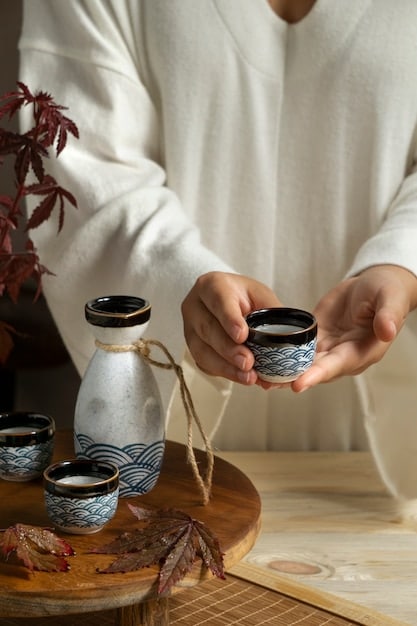
Expressing Gratitude
After taking a few sips of tea, offer a silent gesture of appreciation to the tea master and the other participants.
A simple nod or a slight bow is sufficient to convey your gratitude and respect for the ceremony.
To master the art, it is essential to accept tea, sip quietly, convey thanks, and fully absorb each part of the tea ceremony’s rich traditions. Practicing such etiquette improves interaction and regard for custom.
Tea Ceremony Do’s and Don’ts
Navigating the nuances of a Korean tea ceremony can be simplified by understanding the key “do’s” and “don’ts.” These guidelines provide a clear framework for participating respectfully and avoiding potential faux pas.
For US participants, adhering to these tips will help ensure a positive and culturally sensitive experience.
Do’s
Arrive on time and dressed appropriately. Traditional Korean clothing is welcomed but not required. Opt for modest and respectful attire.
Listen attentively to the tea master and follow their instructions. Show respect for their knowledge and expertise.
Don’ts
Don’t wear strong perfumes or colognes, as they can interfere with the aroma of the tea.
Don’t talk excessively or engage in loud conversations. Maintain a quiet and respectful demeanor throughout the ceremony.
- Do: Dress modestly and arrive early.
- Do: Listen to the tea master/host and follow along.
- Don’t: Wear strong scents, keep conversation at a minimum.
By observing the specific do’s and don’ts US participants can showcase respect, cultivate significant experiences, and improve cultural sensitivity at Korean tea parties. Being conscious of these rules helps to smooth contact and enjoyment of traditional customs.
Adapting to the Cultural Differences
As US participants, recognizing and adapting to cultural differences is paramount for a successful and meaningful Korean tea ceremony experience. Understanding the nuances of Korean culture will enrich your participation and foster mutual respect.
Being aware of these distinctions will also help you avoid unintentional cultural misunderstandings.
Collectivist Culture
Korean culture emphasizes collectivism, where group harmony and social cohesion are highly valued. Defer to the guidance of elders and showing respect for the community.
Recognizing and respecting these cultural values is crucial for fostering positive interactions.
Nonverbal Communication
Nonverbal communication plays a significant role in Korean culture. Pay attention to body language, facial expressions, and tone of voice.
Avoid making direct eye contact with elders or superiors, as this can be seen as disrespectful. Respond with respect and appreciation to any instruction.
To sum up, adapting to cultural nuances improves US visitor experiences at Korean tea parties by encouraging mutual respect and minimizing uncomfortable gaps. Honoring communications, collectivist values, and hierarchy norms promotes deeper engagement and richer experiences for everyone.
| Key Point | Brief Description |
|---|---|
| 🍵 Tea Utensils | Learn about the Juban (teapot) and Da Wan (teacups). |
| 🙇 Seating Etiquette | Wait to be seated and maintain good posture. |
| 🤝 Cultural Sensitivity | Respect collectivist values and nonverbal cues. |
| 🍵 Receiving Tea | Use both hands and take small sips. |
Frequently Asked Questions (FAQ)
▼
Opt for respectful and modest attire. Traditional Korean clothing is welcomed, but not expected. Avoid overly revealing or casual clothing.
▼
Minimize excess talking to maintain the reverent atmosphere. Engage if there’s a cue for responses or questions, or if the host prompts interaction.
▼
Receive the teacup with both hands, showing respect. Hold it gently, admire the tea’s color and aroma, and take small sips to savor the taste.
▼
Even if the tea is not to your taste, take a small sip as a sign of respect. You are not obliged to finish the whole cup, but avoid making a face.
▼
Offer a silent gesture of appreciation. A simple gracious nod or a slight respectful bow towards the tea master conveys your sincere gratitude unobtrusively.
Conclusion
Participating in a Korean tea ceremony is an exceptional experience that provides a window into Korean customs and values. By understanding the etiquette, respecting cultural nuances, and engaging with sincerity, US participants can fully immerse themselves in the beauty and serenity of darye, promoting mutual cultural exchanges.
